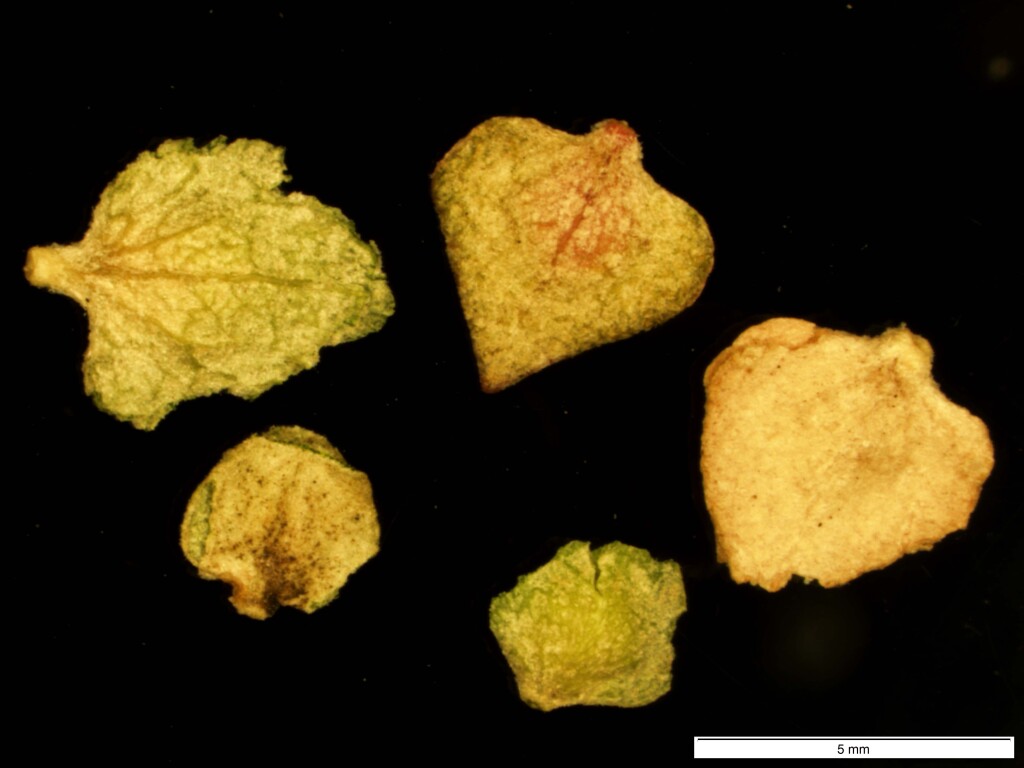Atriplex paludosa subsp. paludosa
Marsh SaltbushDecumbent or sprawling shrub, to c. 1.6 m high, chiefly dioecious. Leaves narrowly elliptic to oblong, 12–40 mm long, 2–8 mm wide, margins entire, rarely coarsely toothed, upper surface green and glabrous, lower surface densely mealy and whitish. Male flowers in dense distinct or continuous globose clusters within simple or branched spikes. Female flowers few in upper axils or clusters along terminal leafless spikes to c. 15 cm long. Fruiting bracteoles sessile, fused and often slightly fleshy near base, green or somewhat mealy, triangular or broadly ovate, truncate or slightly cordate at base, entire or with a few teeth above midway, mostly 7–10 mm long and wide, dorsal appendages absent. Fruits most of year.
MuM, VVP, GipP, OtP, WaP. Locally common on fringes of coastal and near-coastal saltmarshes west from Wilsons Promontory (where apparently absent): e.g. French Is., Tooradin, Werribee, Queenscliff, Port Fairy. Also known from the northwest where it has been collected twice (near Murrayville and Lake Hindmarsh).
4 subspecies, the 3 confined to Western Australia and South Australia having leaves grey-mealy on both surfaces.
Walsh, N.G. (1996). Chenopodiaceae. In: Walsh, N.G.; Entwisle, T.J., Flora of Victoria Vol. 3, Dicotyledons Winteraceae to Myrtaceae, pp. 129–199. Inkata Press, Melbourne.
 Spinning
Spinning
